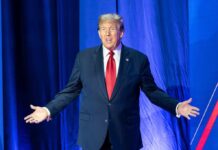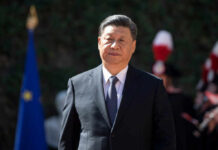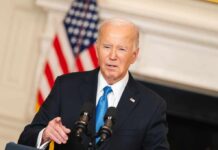
As the 2024 season heats up, the polling industry is in an uproar over a specter that continues to haunt their data – the Trump Effect. As President Donald Trump’s return to the political battlefield takes shape, pollsters are again wrestling with the challenge of accurately gauging his support. The former president’s unique ability to draw out seldom-voting and hard-to-reach constituents has repeatedly disrupted traditional polling methods, leading to significant underestimations of his backing in 2016 and 2020.
Trump’s emergence on the political stage, followed by his successful presidential campaign in 2016, shocked many, especially pollsters. They had failed to predict the results accurately, and the situation repeated in 2020. The error lay in underestimating Trump’s support and misreading the Republican backing, particularly from voters not typically active in the political realm.
Pollsters Fretting Over a Repeat of the 'Trump Effect' in 2024 PajamasMedia https://t.co/etBRRAiNFY pic.twitter.com/WQ4uCsEBns
— Jewish Community (@JComm_BlogFeeds) May 14, 2023
The elections like those in 2018 and 2022 did not see such inconsistencies. Jennifer Agiesta, the director of polling and election analytics at CNN, boasted about the accuracy of their 2022 midterm election polls, stating, “We were within the error margin on just about every poll we did.” Yet, the Trump Factor is the wild card that throws off the predictions.
The problem stems from Trump’s ability to energize a largely invisible base to pollsters. Many voters are either overlooked in polls or choose not to participate. The result is an unpredictable voting bloc that resists conventional polling methodologies.
Efforts are underway to correct past mistakes. The Democratic polling firm Global Strategy Group, for instance, has taken a significant methodological shift. They are now using voters’ self-reported 2020 general-election presidential vote as a variable, a practice gaining popularity though yet to be universal. This change and efforts to include less politically active voters aim to correct the biases that led to significant underestimations in 2020.
But these changes are not without their critics. Some argue that it’s not just Trump-aligned voters who are harder to reach but less-engaged voters overall. Traditional phone surveys, despite being costlier, seem to be the most effective way to reach these voters. Still, many pollsters have replaced or abandoned this method to cut costs.
As Andrew Baumann, a partner at Global Strategy Group, aptly put it, “If anybody wants to be honest, it is going to be an enormous challenge if it indeed is going to be Trump against Biden in ’24.”
Despite the 2022 midterm election’s success, the looming 2024 presidential election with a potential Trump candidacy presents a substantial challenge. Confidence might be high after the 2022 success, but as Baumann warned, “I’m still worried about 2024. We were confident that we did after 2016. And we didn’t.”
As 2024 draws nearer, the industry must grapple with the Trump Effect again. The need to dissect and understand the Trump voter more accurately is paramount, as the industry’s reputation and the public’s faith in its results hang in the balance.
































